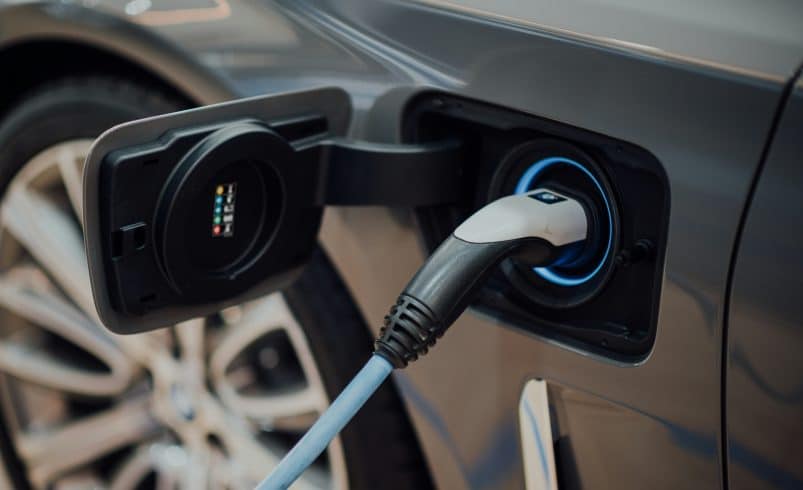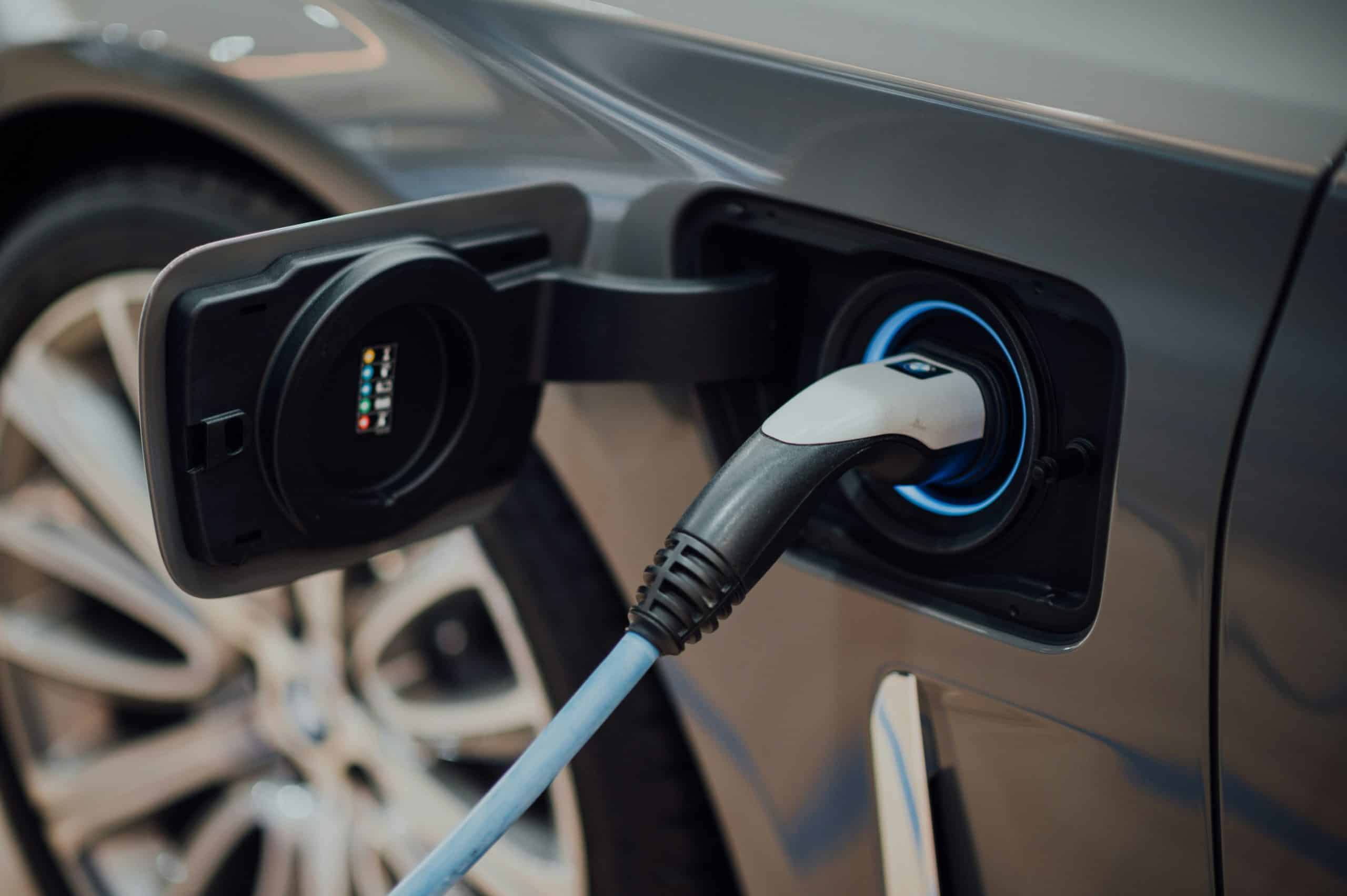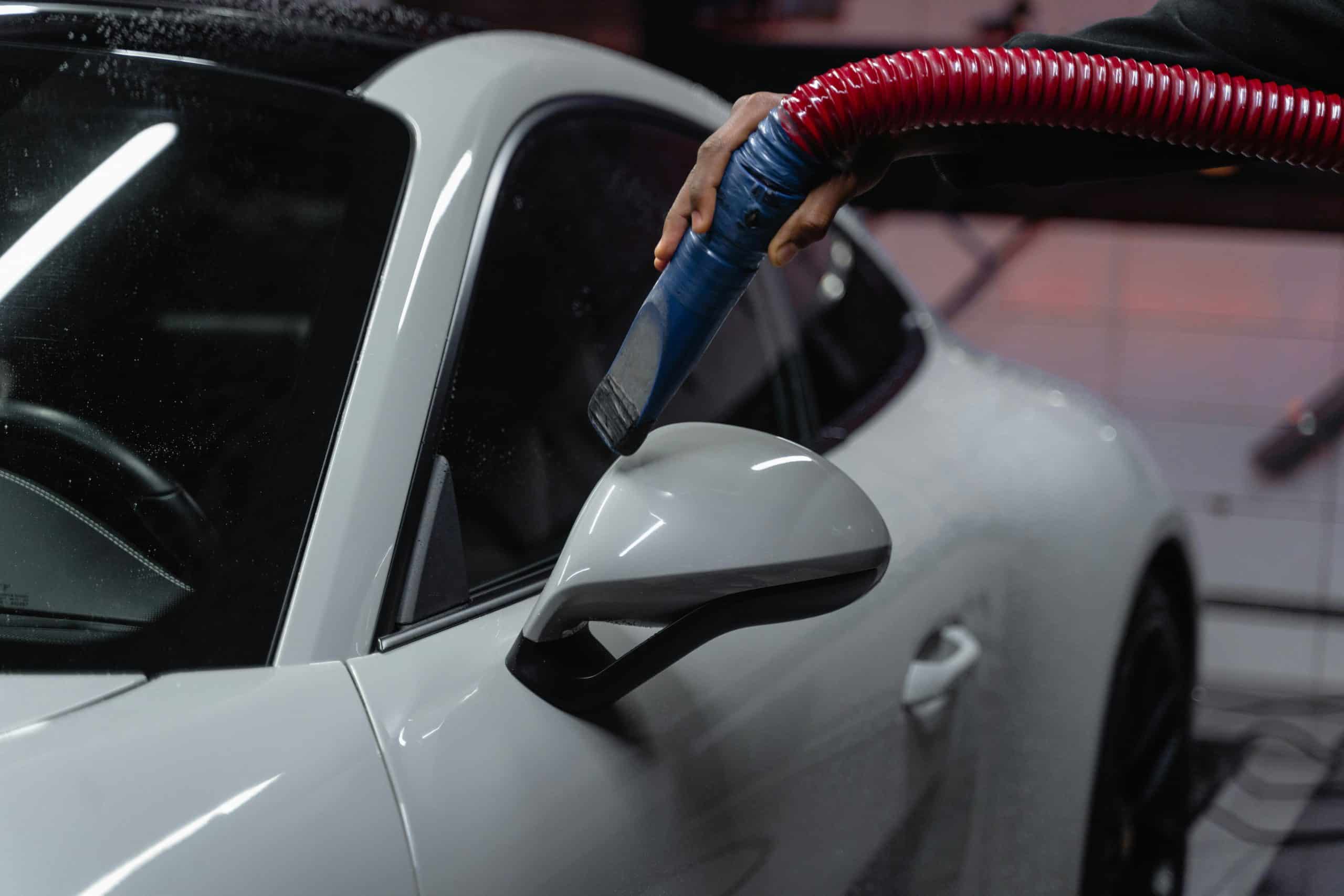The average American spends nearly 27 minutes commuting to work each day—that’s over 200 hours annually behind the wheel. “Your choice of vehicle isn’t just a purchase; it’s an investment in how you experience those hours,” says automotive analyst Maria Chen. As gas prices fluctuate and environmental concerns grow, many commuters find themselves at a crossroads: should they go fully electric or opt for a hybrid vehicle? This decision becomes particularly crucial when you consider that the right choice could save you thousands in fuel costs while potentially cutting your carbon footprint in half. I’ve helped hundreds of commuters make this transition, and the right choice ultimately depends on your specific commuting patterns, access to charging infrastructure, and personal priorities.
Understanding Electric Vehicles for Commuters
Battery electric vehicles (BEVs) represent the purest form of electric mobility, operating exclusively on electric power stored in onboard battery packs. Unlike their hybrid counterparts, BEVs contain no internal combustion engine, relying instead on one or more electric motors powered by high-capacity lithium-ion battery systems. These vehicles convert stored electrical energy directly into mechanical energy through their motors, delivering power to the wheels with remarkable efficiency—typically converting 77-82% of electrical energy to power at the wheels, compared to roughly 12-30% for conventional gasoline vehicles.
The EV landscape has transformed dramatically by 2025, with even entry-level models now offering ranges exceeding 300 miles per charge. This significant improvement over earlier generations stems from advances in battery chemistry, thermal management systems, and motor efficiency. Models like the 2025 Chevrolet Equinox EV provide 320 miles per charge at a starting price point under $35,000, while mid-range offerings from manufacturers like Hyundai, Kia, and Volkswagen consistently deliver 350+ miles. Premium models from Tesla, Lucid, and Mercedes-Benz push boundaries further with several offerings exceeding 400 miles per charge.
For daily commuters, charging infrastructure represents a critical consideration. Home charging typically occurs through either Level 1 (standard 120V outlet) or Level 2 (240V) systems. Level 1 charging adds approximately 3-5 miles of range per hour—sufficient for shorter commutes with overnight charging. Level 2 systems, which typically require professional installation at $500-$2,000, deliver 25-30 miles of range per hour, easily replenishing most commutes in 1-3 hours. For apartment dwellers or those without dedicated parking, public charging networks continue expanding, with over 175,000 public chargers now available nationwide at shopping centers, workplace parking facilities, and dedicated charging stations.
EVs demonstrate distinct performance characteristics across different commuting environments. In urban settings with frequent stops, EVs excel through regenerative braking, which recaptures energy normally lost during deceleration. City efficiency often exceeds EPA ratings, with many drivers reporting 10-15% better real-world range in stop-and-go conditions. Highway driving presents different dynamics—while EVs lack the energy losses associated with idling and low-speed operation, they face increased aerodynamic resistance at highway speeds. Most modern EVs achieve optimal efficiency at 55-60 mph, with range decreasing predictably at higher speeds.
Overnight charging transforms the ownership experience for typical commuters. With the average American commute spanning approximately 32 miles round-trip, even a basic Level 1 charging setup can fully replenish daily energy needs overnight. This pattern eliminates the need for dedicated refueling stops, effectively providing commuters with a “full tank” each morning. Data shows that 80% of EV charging currently occurs at home, with most owners reporting that they rarely use public charging for their regular commuting needs, reserving public infrastructure primarily for longer journeys beyond their typical patterns.
Hybrid Technology Explained
The hybrid vehicle ecosystem encompasses several distinct technologies, each offering different balances of electric and gasoline operation. Conventional hybrids (sometimes called HEVs or non-plug-in hybrids) like the Toyota Prius combine a gasoline engine with a small electric motor and battery that recharges exclusively through regenerative braking and the gasoline engine. These systems typically operate in electric-only mode only at very low speeds or for extremely short distances.
Plug-in hybrid electric vehicles (PHEVs) represent the middle ground, featuring larger batteries that can be charged from external power sources while retaining a gasoline engine for extended range. The 2025 PHEV market offers electric-only ranges between 35-85 miles depending on model, with the Toyota RAV4 Prime delivering 63 miles of electric range before switching to hybrid operation. Ford’s Escape PHEV provides 51 miles of electric range, while luxury offerings like the BMW X5 PHEV now achieve 55 miles of electric-only operation—sufficient for many commuters to complete their daily drives without using gasoline.
Mild hybrids employ the least extensive electrification, using 48-volt systems to support engine operation with features like electric torque assistance and enhanced start-stop capability. While they cannot operate in fully electric mode, these systems improve fuel efficiency by 10-15% compared to non-hybrid equivalents.
Regenerative braking represents a cornerstone technology across all hybrid systems. When drivers apply brakes in conventional vehicles, kinetic energy converts to heat energy through friction—effectively wasting energy that propelled the vehicle. Hybrid systems instead use electric motors as generators during deceleration, converting kinetic energy back into electricity stored in the battery. This process proves particularly valuable in commuting scenarios with frequent stops, allowing hybrids to recapture 60-70% of braking energy that would otherwise dissipate as heat.
The latest hybrid models demonstrate remarkable efficiency improvements over previous generations. Updated hybrid powertrains now regularly achieve 50-60 mpg in mixed driving conditions, with the 2025 Toyota Prius rating at 59 mpg combined and the Honda Insight reaching 57 mpg. PHEVs operate under a different paradigm, with the 2025 Hyundai Tucson PHEV delivering 41 mpg after depleting its 42-mile electric range, and the Kia Sportage PHEV achieving similar figures.
Hybrid powertrain operation follows sophisticated algorithms balancing multiple factors. In conventional hybrids, electric-only operation typically occurs below 25 mph when power demands remain modest, with the gasoline engine activating during acceleration, higher speeds, or when battery levels fall below certain thresholds. PHEVs prioritize electric operation until their battery depletes to a predetermined level, after which they function like conventional hybrids. Most current PHEVs include driver-selectable modes allowing users to save electric range for specific portions of their commute—for example, reserving battery power for congested city sections while using the engine on highway portions.
Cost Comparison for Daily Commuters
The initial purchase price differential between electric and hybrid vehicles continues narrowing in 2025, though distinctions remain across market segments. Compact EVs now command an average premium of $3,000-$5,000 over comparable hybrid models, while the gap widens to $7,000-$10,000 in the crossover and SUV segments. For instance, the 2025 Hyundai Kona Electric starts at $34,900 compared to $29,800 for the Kona Hybrid, while the Toyota RAV4 hybrid begins at $32,400 versus $39,500 for comparable electric alternatives like the Volkswagen ID.4.
Charging costs versus fuel expenditures reveal significant variations based on commuting distance and local utility rates. With the national residential electricity average at 16 cents per kilowatt-hour in 2025, a typical EV consuming 3.5 miles per kWh costs approximately 4.6 cents per mile to operate. Conventional hybrids averaging 50 mpg with gasoline at $3.50 per gallon cost about 7 cents per mile, while PHEVs operating in electric mode match EV costs before transitioning to hybrid costs after depleting their battery. For a 250-day work year with a 30-mile round-trip commute, this translates to annual commuting energy costs of approximately $345 for a pure EV, $525 for a conventional hybrid, and $390 for a PHEV with sufficient electric range to cover the daily commute with occasional gasoline operation.
Maintenance expenses diverge significantly between vehicle types. EVs eliminate numerous maintenance requirements including oil changes, transmission service, spark plug replacement, and emissions system maintenance. Data from fleet operators indicates that EVs typically reduce maintenance costs by 40-50% compared to conventional vehicles. Hybrids occupy a middle ground—while they require standard engine maintenance, longer brake life due to regenerative braking and reduced engine wear in electric operation typically reduces maintenance costs by 25-30% compared to conventional vehicles. Over a five-year ownership period, maintenance savings typically range from $1,800-$2,500 for EVs and $900-$1,400 for hybrids compared to conventional vehicles.
The 2025 incentive landscape provides varied support for electrified vehicles. Federal tax credits of up to $7,500 apply to domestically manufactured EVs meeting battery component sourcing requirements, while PHEVs with batteries exceeding 7 kWh qualify for proportional credits based on capacity ($3,750-$4,500 for most models). Additional incentives vary significantly by state, with California, New York, Massachusetts, and Colorado offering supplemental rebates ranging from $1,500-$4,000 for qualifying vehicles. Utility companies increasingly provide rebates for home charging equipment, typically covering 50-75% of installation costs up to predetermined maximums.
Resale value projections show evolving patterns. Early concerns about rapid EV depreciation have largely dissipated as battery longevity data proves more favorable than initially anticipated. Current projections show mainstream EVs retaining 52-58% of value after three years compared to 56-62% for comparable hybrid models. Premium EVs demonstrate stronger retention, with models from Tesla and Rivian maintaining 60-65% of value after three years.
Total cost of ownership analysis over a five-year period reveals compelling economics for both technologies depending on use case. For a commuter traveling 15,000 annual miles with access to home charging, the average EV now achieves cost parity with conventional vehicles in 3.2 years before delivering net savings. Hybrids typically reach cost parity faster (2.1 years) but offer smaller long-term savings. PHEVs demonstrate the most use-case dependent economics, providing maximum benefit to drivers who can utilize their electric range for most daily driving while maintaining flexibility for occasional longer trips.
Commute-Specific Performance Factors
Acceleration characteristics between EVs and hybrids create distinctly different driving experiences during daily commutes. Electric vehicles deliver peak torque instantly, providing responsive acceleration from standstill—particularly valuable when merging or navigating congested traffic. Even modestly powered EVs like the Nissan Leaf accelerate from 0-30 mph in approximately 3 seconds, while more powerful models like the Tesla Model 3 Long Range cut this figure to under 2 seconds. This immediate responsiveness eliminates the hesitation sometimes experienced in stop-and-go traffic with conventional vehicles.
Hybrids demonstrate more varied acceleration characteristics depending on their specific engineering approach. Conventional hybrids like those from Toyota employ power-split transmissions that can occasionally produce a “rubber band” effect during acceleration, where engine RPM initially climbs before vehicle speed catches up. Performance-oriented hybrids from manufacturers like Lexus and BMW employ different architectures that provide more direct acceleration feel, though still lacking the instantaneous torque delivery of pure EVs. PHEVs operating in electric mode deliver EV-like responsiveness until switching to hybrid operation.
Cold weather significantly impacts both vehicle types but through different mechanisms. EVs experience range reductions of 20-30% in subfreezing temperatures due to increased battery resistance and energy diverted to cabin heating. However, most 2025 models incorporate heat pump systems that reduce this impact compared to earlier generations. Cold weather commuters benefit from EVs’ ability to precondition while still connected to charging—warming both cabin and battery using grid power rather than stored energy.
Hybrids face different cold-weather challenges. Their gasoline engines must reach operating temperature before achieving optimal efficiency, resulting in reduced fuel economy during short winter commutes. However, they avoid the range anxiety that can affect EV drivers in extreme cold. PHEVs demonstrate particularly mixed performance in cold conditions, with electric range often decreasing by 30-40% while their ability to switch to gasoline operation provides operational security.
Hot weather presents its own considerations. Modern EVs employ sophisticated thermal management systems that maintain battery temperatures within optimal ranges even in extreme heat, though running air conditioning can reduce range by 10-15%. Many models now incorporate heat-reflective glass and ventilated seats to reduce cooling demands. Hybrids typically show minimal efficiency impact in hot weather beyond the air conditioning load, though their more complex powertrain generates additional heat that must be managed.
Highway versus city efficiency patterns reveal contrasting strengths. EVs typically achieve their best efficiency in city driving due to regenerative braking and the absence of idling losses. Highway driving at steady speeds above 65 mph increases energy consumption due to aerodynamic resistance, though modern EVs with coefficients of drag as low as 0.20-0.24 mitigate this effect substantially. Conversely, conventional hybrids often demonstrate their best efficiency in mixed driving, with some models actually performing more efficiently on highways than in pure city conditions due to engine optimization for steady-state operation.
Cargo and passenger accommodations reflect underlying architectural differences. Most purpose-built EVs utilize “skateboard” designs with batteries mounted beneath the passenger compartment, creating flat floors and often additional storage spaces like front trunks. This architecture typically provides 10-15% more usable interior space than similarly-sized conventional vehicles. Hybrids, particularly those adapted from conventional platforms, sometimes sacrifice cargo volume to accommodate battery packs, though purpose-designed hybrids like the Prius minimize this compromise. For daily commuters, these differences manifest in practical considerations like laptop bag storage, grocery capacity after work, and overall cabin spaciousness.
Charging Infrastructure vs. Fuel Availability
Home charging practicality varies dramatically between housing types, creating significant implications for potential EV adopters. Single-family homeowners with garages or dedicated parking represent the most straightforward scenario, typically requiring only an electrician visit to install a Level 2 charger at costs ranging from $600-$2,500 including equipment and installation. For townhouse residents with assigned parking, installation often involves homeowner association approval but remains technically feasible in most cases.
Apartment dwellers face more challenging scenarios. While new multi-unit developments increasingly incorporate EV-ready parking with pre-wired circuits, older properties rarely offer such amenities. The 2025 landscape shows approximately 38% of apartment complexes in urban centers now offering some form of EV charging, up from 12% in 2021, though availability remains concentrated in newer luxury properties. Innovative solutions like ChargePoint’s PowerFlex systems, which dynamically allocate available electrical capacity across multiple vehicles, have helped expand multi-unit dwelling charging options.
Workplace charging availability demonstrates strong regional variations. Corporate campuses in technology centers like San Francisco, Seattle, and Boston now commonly provide charging for 15-25% of parking spaces, often at subsidized or free rates as employee benefits. Manufacturing facilities lag behind with approximately 7% charging space availability nationwide, though automotive industry plants lead this segment with substantially higher percentages. Rural workplace charging remains limited, with only 3-5% of parking spaces equipped across most sectors. Government facilities demonstrate mixed deployment, with federal facilities leading state and local governments in charging availability.
Public charging networks have undergone substantial expansion, with the U.S. now hosting over 175,000 public charging ports including 32,000 DC fast chargers. Major networks include Tesla’s Supercharger network (partially opened to non-Tesla vehicles), Electrify America, EVgo, and ChargePoint, along with numerous regional providers. Reliability metrics show improvement from earlier deployments, with major networks now reporting 92-96% uptime compared to 85-90% in 2022. Geographic distribution continues favoring coastal regions and major interstate corridors, though previously underserved areas like the Mountain West and Deep South show accelerated deployment.
Time requirements for charging versus refueling represent a fundamental operational difference affecting commute planning. While gasoline refueling typically requires a dedicated 5-10 minute stop, EV charging follows different patterns. Home and workplace charging typically occurs during natural vehicle downtime (overnight or during work hours), effectively eliminating dedicated refueling time from owners’ routines. Public DC fast charging for longer trips requires 20-35 minutes to restore 80% battery capacity in most current models, presenting a different calculus for commuters exceeding their vehicle’s standard range.
For commuters regularly traveling beyond typical EV ranges, specific planning considerations arise. PHEVs offer the simplest solution by automatically transitioning to gasoline operation after depleting electric range. Pure EV commuters with occasional extended travel requirements typically develop familiarity with fast-charging locations along their routes, often coordinating these stops with meal breaks or other natural pauses. Fleet data indicates that approximately 8% of EV owners also maintain access to a conventional vehicle for exceptional distance needs, while 23% report occasionally renting vehicles for long-distance travel.
Environmental Impact of Your Commute Choice
Tailpipe emissions represent the most visible environmental difference between vehicle types. Battery electric vehicles produce zero direct emissions during operation, eliminating both greenhouse gases and criteria pollutants like nitrogen oxides and particulate matter. This benefit becomes particularly significant in dense urban environments where emissions concentrate in high-traffic corridors.
Conventional hybrids reduce tailpipe emissions by 30-40% compared to similar non-hybrid vehicles through improved efficiency, though they still produce significant emissions during operation. PHEVs present a more complex profile, generating zero tailpipe emissions during electric operation before producing hybrid-level emissions after battery depletion. For commuters whose daily travel falls within their PHEV’s electric range, real-world emissions reductions of 80-90% compared to conventional vehicles are achievable.
Electricity grid sources substantially influence the overall environmental impact of EVs. In regions powered primarily by renewable energy or nuclear power, EVs deliver greenhouse gas reductions of 85-99% compared to conventional vehicles on a well-to-wheels basis. Areas with coal-dominant grids show smaller but still significant advantages of
The Commuter’s Verdict
This choice between electric and hybrid technology ultimately comes down to your specific commuting reality. EVs offer unparalleled efficiency and environmental benefits for those with reliable charging access and predictable routes. Hybrids provide versatility and peace of mind for variable commutes or charging-limited situations. The good news? Both options deliver significant improvements over conventional vehicles, reducing both your environmental impact and long-term costs. Your daily drive deserves a vehicle that aligns with both your practical needs and personal values—whether that means embracing the all-electric future or taking the hybrid middle path.












